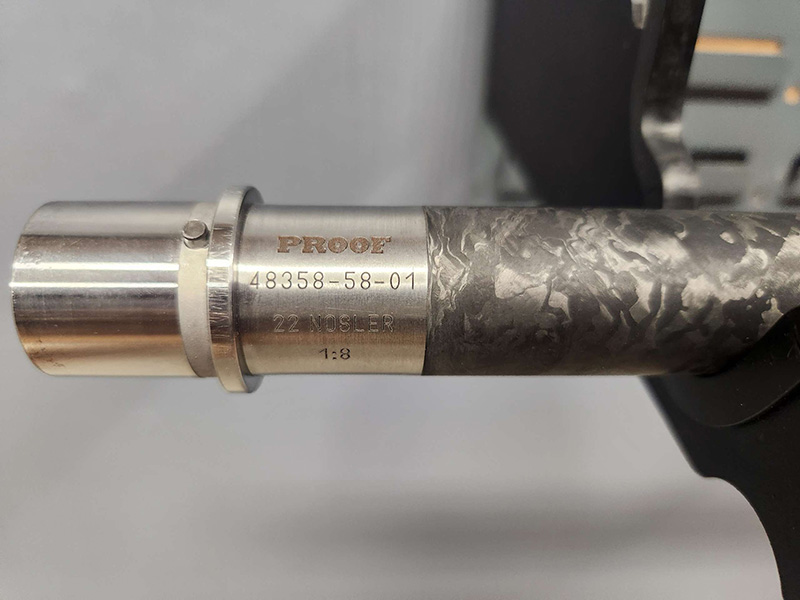Rifle barrels are critical components of firearms, influencing accuracy, velocity, and overall performance. The lifespan of a rifle barrel depends on various factors such as materials used, shooting habits, maintenance, and environmental conditions. This document aims to provide insights into rifle barrel lifespan, factors affecting it, and signs of wear and tear.


Barrel Burnout and Factors Affecting Lifespan
Barrel burnout refers to the gradual degradation of a rifle barrel’s performance due to repeated firing. Several factors contribute to barrel burnout:
Velocity and Pressure: Higher velocities and pressures generated by hotter loads accelerate barrel wear. Magnum cartridges and high-velocity rounds can shorten barrel life compared to lower-pressure calibers.
Cleaning and Maintenance: Proper cleaning and maintenance are crucial for extending barrel life. Neglecting to remove fouling agents such as carbon and copper can accelerate wear and decrease accuracy.
Strings of Fire: Rapid firing, especially in succession, can increase barrel temperatures significantly, leading to accelerated wear. This phenomenon is known as “stringing” and commonly occurs during rapid-fire shooting sessions or competitions.
Material Composition: Rifle barrels are typically made from various materials such as stainless steel, chrome-moly steel, and carbon fiber. Stainless steel and certain alloy compositions are known for their durability and resistance to corrosion, offering longer barrel life compared to other materials.
Effect of Velocity on Barrel Life
Velocity plays a crucial role in determining barrel life. Higher velocities result in increased pressure and heat within the barrel, causing more rapid erosion of the rifling. While higher velocities are desirable for long-range shooting and hunting, they come at the cost of reduced barrel longevity. Shooters should strike a balance between velocity and barrel wear based on their specific needs and preferences.
Cleaning and Maintenance
Proper cleaning and maintenance practices can significantly extend the lifespan of a rifle barrel. Regularly cleaning the barrel to remove carbon fouling, copper fouling, and other debris helps maintain optimal performance and accuracy. Using appropriate cleaning solvents, brushes, and tools ensures thorough cleaning without causing damage to the barrel’s interior surface.
Strings of Fire
Avoiding prolonged strings of fire is essential for preserving barrel life. Continuous firing sessions without allowing the barrel to cool can lead to excessive heat buildup, accelerating wear and potentially causing accuracy issues. Shooters should practice proper heat management techniques, such as allowing the barrel to cool between shots or using barrel cooling devices during extended shooting sessions.
Raw Materials and Barrel Life
Different raw materials offer varying degrees of barrel life:
Stainless Steel: Stainless steel barrels are renowned for their durability and resistance to corrosion. They offer excellent barrel life and are suitable for a wide range of shooting applications.
Chrome-Moly Steel: Chrome-moly steel barrels are popular among shooters for their balance of durability and affordability. While not as corrosion-resistant as stainless steel, they still provide good barrel life when properly maintained.
Carbon Fiber: Carbon fiber barrels are lightweight and offer excellent thermal stability. While they may have slightly shorter barrel life compared to steel barrels, they are still highly durable and ideal for applications where weight reduction is critical.
Symptoms of Barrel Burnout
Recognizing the signs of barrel burnout is crucial for maintaining optimal firearm performance. Common symptoms include:
Fire Cracking: Cracks or fissures on the interior surface of the barrel, indicating structural weakness due to heat and pressure.
Carbon Fouling: Accumulation of carbon deposits inside the barrel, affecting accuracy and velocity.
Copper Fouling: Copper residue left behind by jacketed bullets, leading to increased friction and diminished accuracy over time.
Carbon Ring: A ring of carbon buildup near the chamber end of the barrel, often caused by incomplete combustion of powder residues. This can lead to pressure spikes and reduced accuracy if not addressed.
Understanding the factors influencing rifle barrel lifespan and adopting proper maintenance practices are essential for maximizing firearm performance and longevity. By monitoring signs of wear and implementing preventive measures, shooters can enjoy consistent accuracy and reliability from their rifle barrels for years to come.
